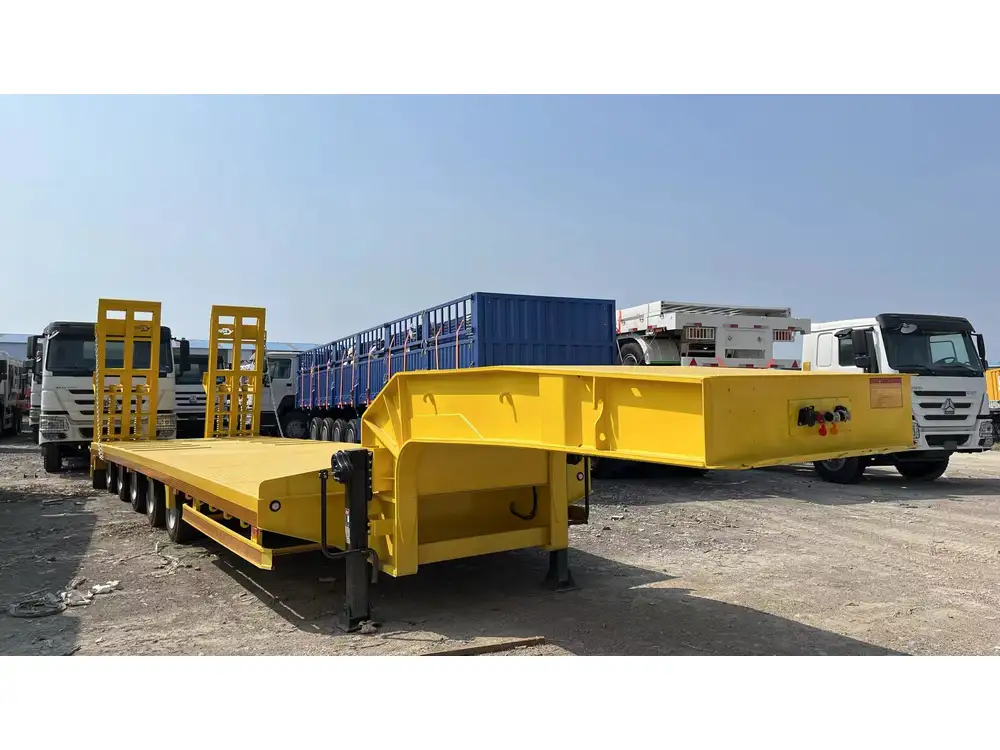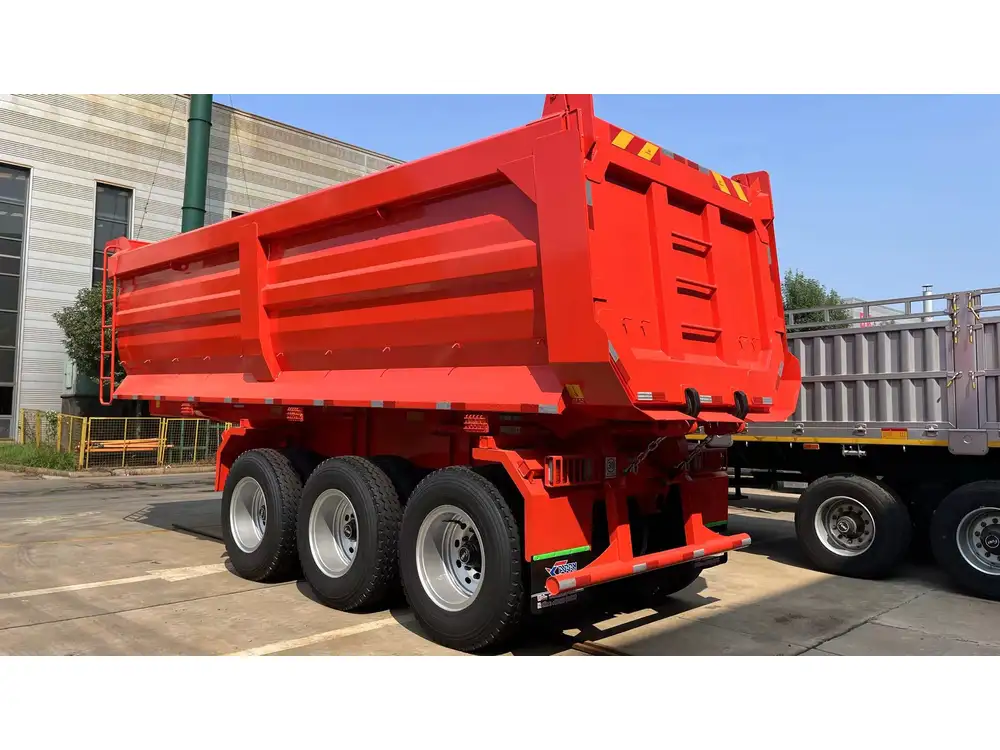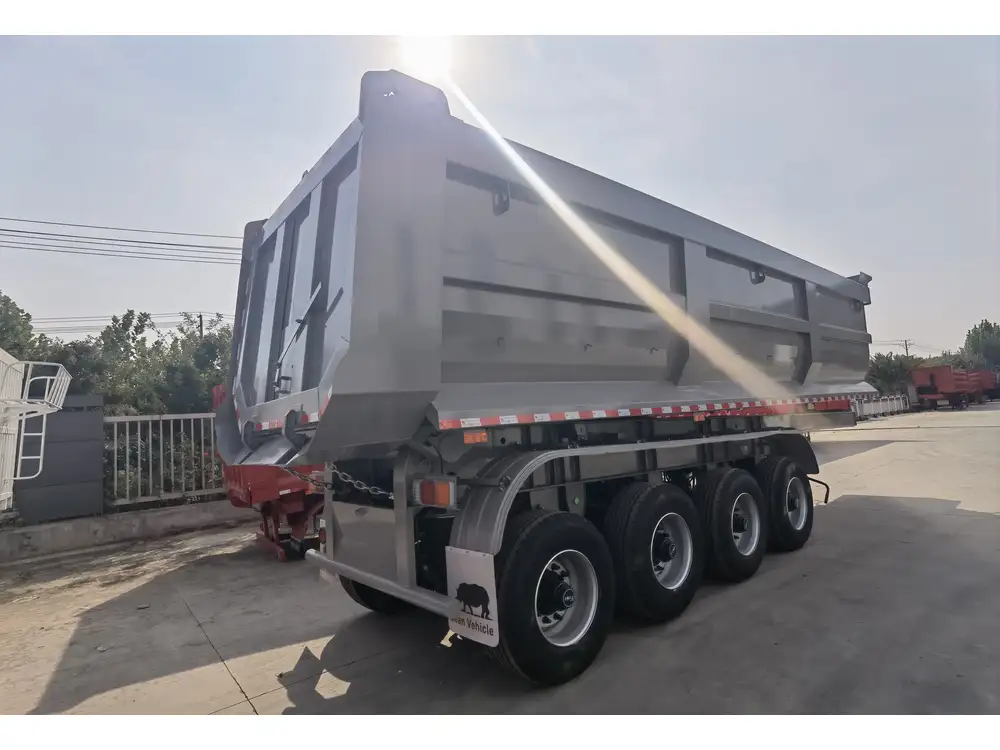Introduction to Hotshot Trailer Equipment
Equipping a flatbed trailer for hotshot trucking involves a detailed understanding of both the specific equipment needed and the best practices for securing and transporting cargo safely and efficiently. Hotshot trucking is defined by the transportation of smaller, time-sensitive loads that require expedited shipping often utilizing a Class 3 to Class 5 truck. Properly outfitting your flatbed trailer can significantly boost productivity, efficiency, and safety on the road.
Understanding Hotshot Trucking
Hotshot trucking is not just about speed; it’s about delivering diverse cargo types while fulfilling customer expectations. This branch of logistics often demands an array of specialized equipment tailored for various loads. Flatbed trailers are often favored due to their versatility and ease of loading and unloading.

Essential Equipment for Flatbed Trailers
Equipping a flatbed trailer for hotshot operations requires careful consideration of both the basic gear and specialized accessories. Below we delve into the fundamental components necessary for an effective setup.
1. Trailer Structure and Load Capacity
Understanding the specifications of your flatbed trailer is paramount. Here are critical considerations:
| Specification | Importance |
|---|---|
| Load Capacity | Calculating the weight limit for safe hauling prevents damage. |
| Trailer Dimensions | Different cargo types may require specific trailer sizes. |
| Construction Material | Steel trailers offer durability, while aluminum provides lightweight benefits. |
2. Safety Equipment
Ensuring safety on the road lays the groundwork for a successful hotshot trucking operation. Key safety equipment includes:
- Load Straps and Tie-Downs: Essential for securing cargo. Use ratchet straps for their strength and reliability.
- Edge Protectors and Corner Boards: Protect both the cargo and the straps from damage during transit.
- Safety Flags: Mandatory for oversized loads to alert other drivers.
- Reflective Tape: Increases visibility and ensures compliance with DOT regulations.

3. Loading Equipment
Efficient loading can drastically reduce turnaround times. Equip your trailer with:
- Dollies: Assist with moving heavy cargo onto the trailer.
- Winches: Facilitate the secure loading of vehicles or oversized items.
- Ramps: For easy access and loading of machinery or heavy goods.
4. Communication Tools
Keeping open lines of communication during a shipment is vital. Equip yourself with:
- Two-way Radios: Essential for communicating with team members on larger jobs.
- GPS Systems: To both navigate and track cargo in real-time.
Adapting to Specific Cargo Types
Hotshot trucking often requires versatility. Here’s how to enhance your setup for different cargo types.

Specialized Equipment for Different Loads
| Cargo Type | Recommended Equipment |
|---|---|
| Agricultural Equipment | Heavy Duty Straps, Ramps, Wheel Chocks |
| Construction Machinery | Winches, Rail Systems, Safety Cones |
| Vehicles | Dollies, Car Hauler Accessories, Tie-Down Systems |
Loading Strategies
Each type of cargo requires strategic loading and securing to prevent movement during transit:
- Center of Gravity: Always load heavier items closer to the trailer’s axles to maintain balance.
- Weight Distribution: Distribute weight evenly across the trailer to prevent swaying.
- Securement Techniques: Use a combination of vertical and horizontal tie-downs for increased stability.
Compliance with Regulations
Understanding and adhering to local and federal regulations is crucial for maintaining safety and legality.

Key Regulatory Areas
- Weight Limits: Always check state laws regarding maximum allowable weights on specific roads.
- Load Securement Rules: Follow the guidelines set forth by the Federal Motor Carrier Safety Administration (FMCSA) for cargo securement.
- Permits for Oversized Loads: Plan ahead for any required permits and route checks for oversized cargo operations.
Documentation Essentials
Maintain proper documentation to avoid potential legal issues:
- Bill of Lading: Essential for transporting goods.
- Driver Qualification File: Keep updated records of driver certifications.
- Inspection Logs: Document regular maintenance and inspections of the trailer and truck.
Tips for Effective Hotshot Operations

Planning Your Routes
A well-planned route minimizes risks and increases efficiency:
- Avoid Congested Areas: Use traffic data to plan around peak hours.
- Check Road Conditions: Weather and construction can impact delivery times.
- Fuel Stops: Factor in fuel stops to avoid running low on fuel mid-journey.
Maintenance of Equipment
Regular maintenance of both the trailer and towing vehicle is fundamental for safety:
- Regular Inspections: Monthly checks can prevent costly breakdowns.
- Brake Systems: Ensure brakes function optimally, as stopping distances can change with load weight.
- Tire Maintenance: Regular checks for wear and proper inflation enhance fuel efficiency and safety.
Enhancing Efficiency with Technology
Technological advancements have significantly transformed hotshot trucking:

GPS and Route Optimization
Advanced GPS systems help in planning the quickest routes and avoiding delays. Additionally, many systems can track fuel usage and monitor driver behavior, providing insights that can lead to improved efficiency.
Load Boards and Freight Matching
Utilizing load boards can help hotshot operators quickly find cargo opportunities that align with their available routes, increasing profitability.
Electronic Logging Devices (ELDs)
Fleet management has been streamlined with ELDs, which comply with regulations and improve route planning. They keep accurate records of driving hours, leading to compliance with HOS regulations.

Conclusion: The Path to Success in Hotshot Trucking
Equipping a flatbed trailer for hotshot operations isn’t merely about the right tools—it’s about a comprehensive approach to safety, compliance, and efficiency. By understanding the various cargo types, leveraging specialized equipment, and implementing best practices, operators can enhance their productivity while navigating complex logistics.
With meticulous planning, continuous improvement through technology, and a focus on safety and compliance, hotshot trucking can maximize its potential in the ever-evolving transportation landscape. By following these strategies, you are poised for success, ensuring every journey is a seamless, profitable endeavor that meets, if not exceeds, client expectations.
Takeaway: The art of successfully equipping a flatbed trailer for hotshot trucking lies not only in the tools at hand, but in understanding the intricate balance of safety, compliance, and operational efficiency. Prioritize preparation, stay informed about regulatory changes, and continually adapt to the shifting demands of the logistics world.



